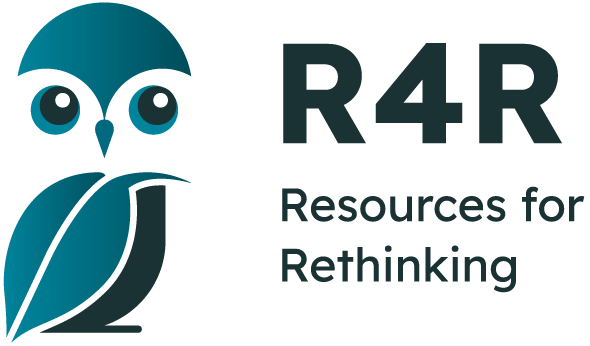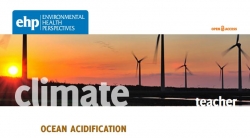- Home
- Tutorial
- Resource Guides
- Focus Areas
- LSF Programs
-
Professional
Development - Review Process
-
A project of LSF

Search for Resources
Description
This resource features experiential learning opportunities that examine the effect of global warming on marine environments. Students conduct experiments to simulate ocean acidification resulting from excess carbon dioxide and then discuss the relationship between the health of oceans and human health. After completing the activities, students will be able to explain how climate change can impact both ocean ph and coral reef habitat.
Part One: What Happens to pH? (2x60min)
After reading and discussing an article on the effects of global warming on coral reefs, students perform an experiment to examine how changes in carbon dioxide levels alter the acidity (pH) of samples of carbonated water, salt water, distilled water, and tap water. (note: The article "In Hot Water" can be found here.)
Part Two: Coral Degradation (2X60min)
Students compare the masses of two seashells before and after placing them in solutions of vinegar and water. They then discuss how the erosion of these shells simulates the degradation of coral reefs due to the rising of pH levels in marine environments. In conclusion, students brainstorm ways to reduce the rate of decomposition of these important habitats.
General Assessment
What skills does this resource explicitly teach?
- Organizing and using apparatus and materials to collect reliable experimental data
- Analyzing and interpreting data
- Inferring and explaining relationships in order to apply experimental results to real world situations
- Working cooperatively with team members
- Communicating data effectively using mathematical calculations
- Identifying further problems or issues to be investigated
- Problem solving
Strengths
- Gives students a chance to practice real science and link it to a current issue
- Science and math focus provided opportunity to practice skills associated with the methodical approach
- Resource is interesting, and up-to-date
- Provides opportunities for experiential "hands-on" learning
- Good background information for teachers
- Objectives for each part of the lesson are clearly stated
- Teacher notes and helpful hints sections are very useful
- Clear and sequential steps are given for lab preparation
- The instructions for the lab procedures are very student-friendly
- Links for related information are provided
- Assessment questions and suggested answers are given
- Student data collection tables are well-organized and user-friendly
Weaknesses
- No authentic action plan in included
- No accommodations suggested for struggling learners
- Reading level for the introductory reading will be too challenging for some middle level students
- Students need explicit opportunities to clarify and express values
- There are no rubrics provided for assessment
Recommendation of how and where to use it
This resource would be very appropriate in a middle school classroom studying the ways that global warming is affecting ocean water chemistry and the consequences of changing levels of pH on marine habitats. It would also bring real world relevance to a science lesson introducing acidic and basic solutions. A great companion video can be found here.
Relevant Curriculum Units
The following tool will allow you to explore the relevant curriculum matches for this resource. To start, select a province listed below.
- Step 1Select a province
- Alberta
- Step 2Select a grade level
- Grade 6
- Step 3Select a subject
- Science
- Step 4Relevant matches
- Living Systems: Understandings of the living world, Earth, and space are deepened through investigating natural systems and their interactions
- Grade 7
- Step 3Select a subject
- Science
- Step 4Relevant matches
- Interactions and Ecosystems
- Grade 8
- Step 3Select a subject
- Science
- Step 4Relevant matches
- Freshwater and Saltwater Systems
- British Columbia
- Step 2Select a grade level
- Grade 12
- Step 3Select a subject
- Environmental Science
- Step 4Relevant matches
- Environmental Science 12: Human activities cause changes in the global climate system
- Science
- Step 4Relevant matches
- Specialized Science 12: Climate change impacts biodiversity and ecosystem health
- Manitoba
- Step 2Select a grade level
- Grade 5
- Step 3Select a subject
- Science
- Step 4Relevant matches
- Earth Science
- Weather
- Grade 7
- Step 3Select a subject
- Science
- Step 4Relevant matches
- Interactions Within Ecosystems
- Life Systems
- Grade 8
- Step 3Select a subject
- Science
- Step 4Relevant matches
- Earth Science
- Water Systems on Earth
- Grade 10
- Step 3Select a subject
- Science
- Step 4Relevant matches
- Earth Science
- Life Systems
- New Brunswick
- Newfoundland & Labrador
- Northwest Territories
- Nova Scotia
- Step 2Select a grade level
- Grade 5
- Step 3Select a subject
- Grade 7
- Step 3Select a subject
- Science
- Step 4Relevant matches
- Science 7: Environmental Action
- Grade 12
- Step 3Select a subject
- Biology
- Step 4Relevant matches
- AP Biology: Ecology
- Environmental Science
- Step 4Relevant matches
- AP Environmental Science: Global Change
- Nunavut
- Step 2Select a grade level
- Grade 5
- Step 3Select a subject
- Science
- Step 4Relevant matches
- Earth and Space Systems: Weather
- Grade 7
- Step 3Select a subject
- Science
- Step 4Relevant matches
- Interactions and Ecosystems
- Grade 8
- Step 3Select a subject
- Science
- Step 4Relevant matches
- Freshwater and Saltwater Systems
- Ontario
- Step 2Select a grade level
- Grade 7
- Step 3Select a subject
- Geography
- Step 4Relevant matches
- Natural Resources around the World: Use and Sustainability
- Science & Technology
- Step 4Relevant matches
- Life Systems: Interactions in the Environment
- Grade 8
- Step 3Select a subject
- Science & Technology
- Step 4Relevant matches
- Earth and Space Systems: Water Systems
- Prince Edward Island
- Quebec
- Step 2Select a grade level
- Grade 5
- Step 3Select a subject
- Science & Technology
- Step 4Relevant matches
- Earth and Space
- Grade 6
- Step 3Select a subject
- Science & Technology
- Step 4Relevant matches
- Earth and Space
- Saskatchewan
- Step 2Select a grade level
- Grade 5
- Step 3Select a subject
- Science
- Step 4Relevant matches
- Weather
- Grade 7
- Step 3Select a subject
- Science
- Step 4Relevant matches
- Science 7: Life Science: Interactions within Ecosystems
- Grade 8
- Step 3Select a subject
- Science
- Step 4Relevant matches
- Science 8: Water Systems on Earth
- Yukon Territory
- Step 2Select a grade level
- Grade 12
- Step 3Select a subject
- Environmental Science
- Step 4Relevant matches
- Environmental Science 12: Human activities cause changes in the global climate system
- Science
- Step 4Relevant matches
- Specialized Science 12: Climate change impacts biodiversity and ecosystem health
Themes Addressed
Air, Atmosphere & Climate (1)
- Climate Change
Ecosystems (2)
- Appreciating the Natural World
- Habitat Loss
Water (1)
- Marine Environments
Sustainability Education Principles
| Principle | Rating | Explanation |
|---|---|---|
| Consideration of Alternative Perspectives | Satisfactory | Students gather information through lab activities and relate these to real life situations. They make their own conclusions on how carbons dioxide levels affect pH, and how the increase in the acidity of ocean waters leads to the degradation of coral reefs. |
Consideration of Alternative Perspectives:
| ||
| Multiple Dimensions of Problems & Solutions | Satisfactory | The resource links global warming, and green house gas production with changing ocean water chemistry. This brings about environmental consequences which impact our own food supply safety, and health. Clear opportunities exist for teachers to introduce discussions of the social and economic consequences of reef degredation. |
| Multiple Dimensions of Problems & Solutions: Effectively addresses the environmental, economic and social dimensions of the issue(s) being explored.
| ||
| Respects Complexity | Satisfactory | Although not explicitly examining all dimensions of the issue, it promotes discussion and action through the hands-on learning activities. |
| Respects Complexity: The complexity of the problems/issues being discussed is respected. | ||
| Acting on Learning | Poor/Not considered | Poor- there are no action activities |
| Acting on Learning: Learning moves from understanding issues to working towards positive change — in personal lifestyle, in school, in the community, or for the planet
| ||
| Values Education | Satisfactory | |
| Values Education: Students are explicitly provided with opportunities to identify, clarify and express their own beliefs/values. | ||
| Empathy & Respect for Humans | Satisfactory | |
| Empathy & Respect for Humans: Empathy and respect are fostered for diverse groups of humans (including different genders, ethnic groups, sexual preferences, etc.). | ||
| Personal Affinity with Earth | Good | Although it does not have an out-of-door experience, it does teach an appreciation of the oceans, and a need to protect marine environments. |
| Personal Affinity with Earth: Encourages a personal affinity with -the natural world.
| ||
| Locally-Focused Learning | Satisfactory | After reading the EHP article, students will see how ocean ecosystems are linked to their own food chain and the value coral reefs have in enhancing medicinal,and spiritual health. |
| Locally-Focused Learning: Includes learning experiences that take advantage of issues/elements within the local community.
| ||
| Past, Present & Future | Good | The use of scientific inquiry allows students to see the effects of past practices and to highlight the current situation. The future would be seen as positive if students use the results of the inquiry as a springboard to action. |
| Past, Present & Future: Promotes an understanding of the past, a sense of the present, and a positive vision for the future. | ||
Pedagogical Approaches
| Principle | Rating | Explanation |
|---|---|---|
| Open-Ended Instruction | Good | Students are able to discover some of the answers on their own through the guided inquiry approach taken. |
| Open-Ended Instruction
: Lessons are structured so that multiple/complex answers are possible; students are not steered toward one 'right' answer. | ||
| Integrated Learning | Satisfactory | This is primarily a science resource, but there are opportunities for addressing outcomes in math and social studies. |
| Integrated Learning: Learning brings together content and skills from more than one subject area
| ||
| Inquiry Learning | Good | |
| Inquiry Learning: Learning is directed by questions, problems, or challenges that students work to address.
| ||
| Differentiated Instruction | Satisfactory | Activities do teach to both the cognitive and affective domains. Reading levels in the EHP introductory article will be challenging for some students. There are no accommodations suggested for students with learning difficulties, but appropriate placement of students in lab groups should address this. |
| Differentiated Instruction: Activities address a range of student learning styles, abilities and readiness.
| ||
| Experiential Learning | Good | Hands-on, minds-on learning are prominent. |
| Experiential Learning: Authentic learning experiences are provided
| ||
| Cooperative Learning | Satisfactory | |
| Cooperative Learning: Group and cooperative learning strategies are a priority.
| ||
| Assessment & Evaluation | Satisfactory | Some assessment tools are provided, but there are no suggested rubrics for evaluating student work. |
| Assessment & Evaluation: Tools are provided that help students and teachers to capture formative and summative information about students' learning and performance. These tools may include reflection questions, checklists, rubrics, etc. | ||
| Peer Teaching | Satisfactory | |
| Peer Teaching: Provides opportunities for students to actively present their knowledge and skills to peers and/or act as teachers and mentors.
| ||
| Case Studies | Good | |
| Case Studies: Relevant case studies are included. Case studies are thorough descriptions of real events from real situations that students use to explore concepts in an authentic context. | ||
| Locus of Control | Satisfactory | |
| Locus of Control: Meaningful opportunities are provided for students to choose elements of program content, the medium in which they wish to work, and/or to go deeper into a chosen issue. | ||

